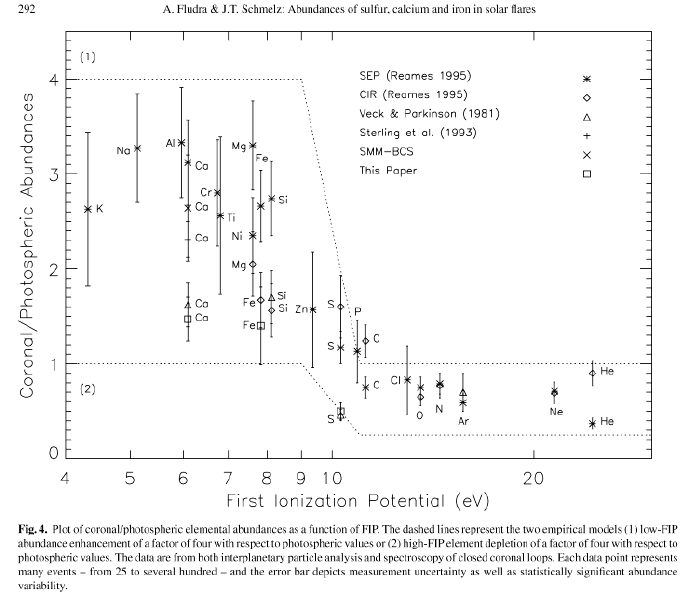There has been a great deal of controversy in the last ten years about variations in the elemental abundances in the solar atmosphere. It appears that the element abundances in the slow solar wind differ from those in the photosphere. In fact, it seems that the coronal abundances vary in different solar features, and within the same structures with time.
The behaviour seems to depend on the value for the First Ionization Potential (FIP) - which is the energy required to ionize the neutral atom. The ions with FIP greater than 10 eV appear to behave differently from those with FIP's less than 10 eV.
Element abundances are usually given relative to the hydrogen abundance.
Unfortunately, for both in-situ and remote-sensing cases, it is difficult to obtain measurements relative to hydrogen. In principle, comparison of line intensities with either hydrogen continuum emission (which is often contaminated by some scattered background intensity), or with the resonantly scattered hydrogen emission lines observed in the corona could provide absolute abundance measurements. In practice, the uncertainties are large.
Most measurements are therefore relative, between an high-FIP element such as Neon or Oxigen and a low-FIP one such as Iron or Magnesium. Neutral Neon, with a FIP of 21.6 eV, has a closed shell structure (1s22s22p6) which is difficult to ionize, whereas it is much easier to ionize Magnesium (1s22s22p63s2), with a FIP of 7.6 eV.
The use of relative measurements has lead to the uncertainty as to whether the observed variations are in fact due to a depletion of high-FIP elements or an enhancement of low-FIP elements.
Note that photospheric abundances of most elements are relatively well determined (with uncertainties of the order of 15%), although values are continuously changing (see, e.g. the photospheric C, N, O abundances). The photospheric abundances of the noble gases (as e.g. Ne and Ar) are not directly measured (because absorption lines of these elements are not present in the photospheric spectra). Their values are derived from carbonaceous meteorites, and therefore have large uncertainties.
Many methods have been used to determine abundances from remote sensing instruments. These methods are closely related to emission measure methods.
|
 |
|
Giulio Del Zanna |
Spectral diagnostics in the EUV |
UNIVERSITY OF CAMBRIDGE Department of Applied Mathematics and Theoretical Physics |
|
26 of 28 |